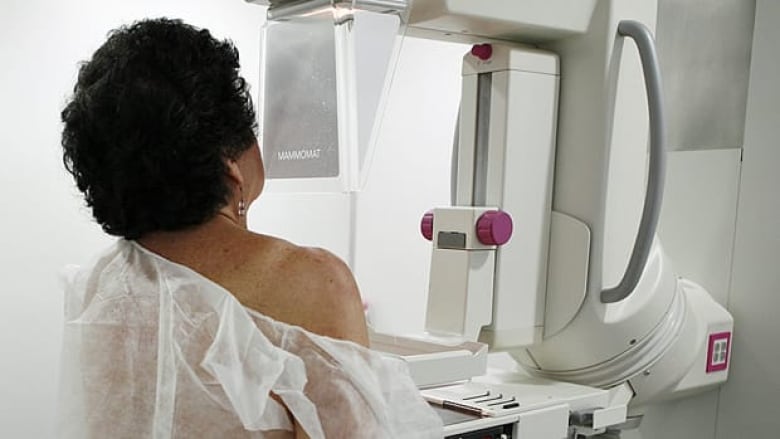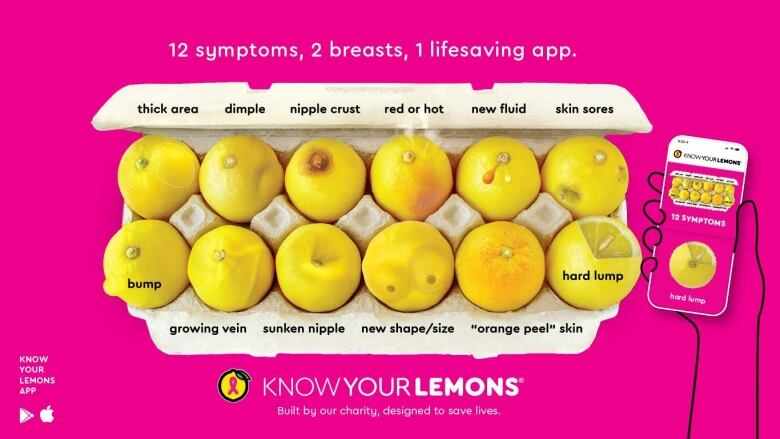What women need to know about breast cancer screening in Canada
Some experts now say women should get annual screening starting at 40


Canadian medical experts are urging women to get their routine breast screenings, as many have fallen behind and experts say larger and more developed cases of breast cancer are now being found.
Earlier this month, the Ontario Medical Association (OMA)shared thatmore than 400,000 fewer mammogramswere performedduring the COVID-19 pandemic.With mammogram capacity back to pre-pandemic levels in Ontario, health officials there are advising women to resume regular screening so potential breast cancer can be detected in its earlier stages.
Breast cancer is a major health concern in Canada, with one in eight Canadian women diagnosed with breast cancerin their lifetime.
"There are two benefits of getting screened and having cancer detected early," saidDr. Paula Gordon, a breast radiologist and a clinical professor in the University of British Columbia's radiology department, in an interview withCBC's The Dose.
Watch / Canadian medical experts say fewer mammograms performed during pandemic
"One is that women are less likely to die of breast cancer. The other is that if they do get breast cancer, they can be successfully treated with less aggressive treatment."
If it's been a while since your last mammography or if you've never had one, here is what some of Canada's leading experts on breast cancer say you should know.
How is breast cancer detected?
In Canada, mammography is the frequently used test to find breast cancer.
There are two types of mammography, according to the Canadian Cancer Society:
- Screening mammography is used to look for cancer in those without any breast cancer symptoms.
- Diagnostic mammography is used to diagnose a breast problem, like a lump.
"Screening mammograms are the best method for detecting breast cancer early and can usually find lumps before women or their doctors can feel them," said Dr. Rose Zacharias, a family physician with a hospital-based practice and president of OMA duringa recent news conference.
What are the risk factors for breast cancer?
A number of factors contribute to your risk. Some are factors that women can control, and others they can't, saidGordon.
A family history, genetic mutations, previous chest radiationand atypical cells on a breast biopsy are all risk factors that cannot be controlled and put those women at a higher risk.
Black, Asian and Hispanic women are also at a higher risk ofgetting breast cancer earlier in life, Gordon added.
"Their incidence peaks in the mid-40s, whereas [for] white womenit peaks in the late 50s and 60s," she said.
A woman's breast density is a risk factor, Gordon said.
She saidthat a breast is made up of fat and normal breast tissue composed of glands, fibrous tissues and more.

"Cancers look white on a mammogram. So does normal breast tissue. So if a woman has a large proportion of normal dense tissue in her breast we know there's an increased risk that we won't see it on a mammogram and it's hidden in the dense breast tissue," said Gordon.
She said the only way to know your breast density category is through a mammogram.Health authorities in six provinces tell all women their breast density category on mammogram results.
"All women should know their breast density, just like all people should know their blood pressure or their cholesterol level," Gordon said.
Although rare, men are also at risk of breast cancer, making up less than one per cent of all cases in the country, according to Canadian Cancer Society.
Eating a healthy diet and reducing or eliminating alcohol and smoking can help decrease someone's risk, said Dr. JeanSeely, a radiologist and a professor in the University of Ottawa's radiology department, who also spoke at the OMA's recent webinar.
Gordon saidliving an active, physical life and maintaining a healthy weight can also help.
When should women start getting routine mammograms?
There are several factors that determine when women start routine mammograms.
"The gold standard would be for all women to have annual mammograms starting at 40," said Gordon.
But depending on where you live in Canada, you may not be able to get a mammogram in your 40s.
Only P.E.I, Yukon and Nova Scotia allow women to self-refer for mammograms annually starting at 40. In Alberta, a requisition from a doctor is required for the first screen, and then self-referral is allowed.
The remaining provinces and territories have varying guidance, with some based on the Canadian Task Force on Preventive Health Care's recommendations for women in their 40s. Details on provincial and territorial guidelines can be found online at mybreastscreening.ca.
Gordon said it's important for this age group to be routinely screened because about 17 per cent of breast cancers occur in women in their 40s.
That's significant because "when women do get breast cancer before they go through menopause, those cancers grow faster than in older women," she said.
And if women don't have routine access to screening, Gordon said "those cancers are being detected later and those women are going to need more aggressive therapy, going to need a mastectomy more likely to need chemo and so on. So even if they survive, their quality of life going through breast cancer is not as good as if they find it earlier."

What about women 50 and older?
The Canadian Task Force on Preventive Health Care recommends women aged 50 to 69 should receive a mammogram every two to three years.
Members of the task force have said the recommendations for more frequent screeningplaces more emphasis on individual choiceand have shared their concerns overpotential increases in false positivesand overdiagnosis.
Gordon disagrees with the task force'sgeneral guidelines and says women who still have periods in their 50s, as well as women going through menopause or taking hormones, should still have annual mammograms.
Women aged 75 and older who are in good health, have a life expectancy of at least 10 more years and don't have another disease that's likely to be fatal in 10 years should still get screened, Gordon said.
Should women under 40 be screened?
The "sweet spot" for starting mammography for average-risk women is age 40, Gordon said, because that's when the incidence level ticks up and the risk associated with radiation is negligible.
"We don't do mammograms routinely until age 40 because [while] breast cancer is not rare,it's not common enough to justify doing mammograms on the whole population," she added.
Should women also do self-exams?
Gordon said the term "self-exam" has gone out of fashion. Now, the term of choice is being "breast aware," she added.
Women should still check their breasts periodically and be aware of what they normally feel like.
"That way they're more likely to notice when that change is small," Gordon said.
She recommends checking in the shower when your hand can more easily slide over the breast. If your breasts hang down more, Gordon recommends lying down to check.
Dr. Erin Cordeiro, a breast surgical oncologist at The Ottawa Hospital and medical director of its Breast Health Centre, said everybody needs to be aware of their breasts, to "advocate for themselves" when they feel something has changedand to bring it to the attention of a health-care provider.
On top of any breast changes, Seelyrecommends that women watch for any changes in the armpits.
There are other ways breast cancer can show up besides a lump.Signs to look out for includepocketed skin, changes in nipple colour, or breast texture.
Watch / How to examine your breasts properly
"The best way to be proactive and be healthy is to detect the breast cancer before it has a symptom of breast cancer, before it's a lump," Seely said.
"That's why we recommend screening mammograms starting at age 40 for all women, regardless of their risk factors, because that's the way we reduce the breast cancer mortality and the significant treatment impact from an advanced stage diagnosis."













_(720p).jpg)


 OFFICIAL HD MUSIC VIDEO.jpg)
.jpg)



























































































